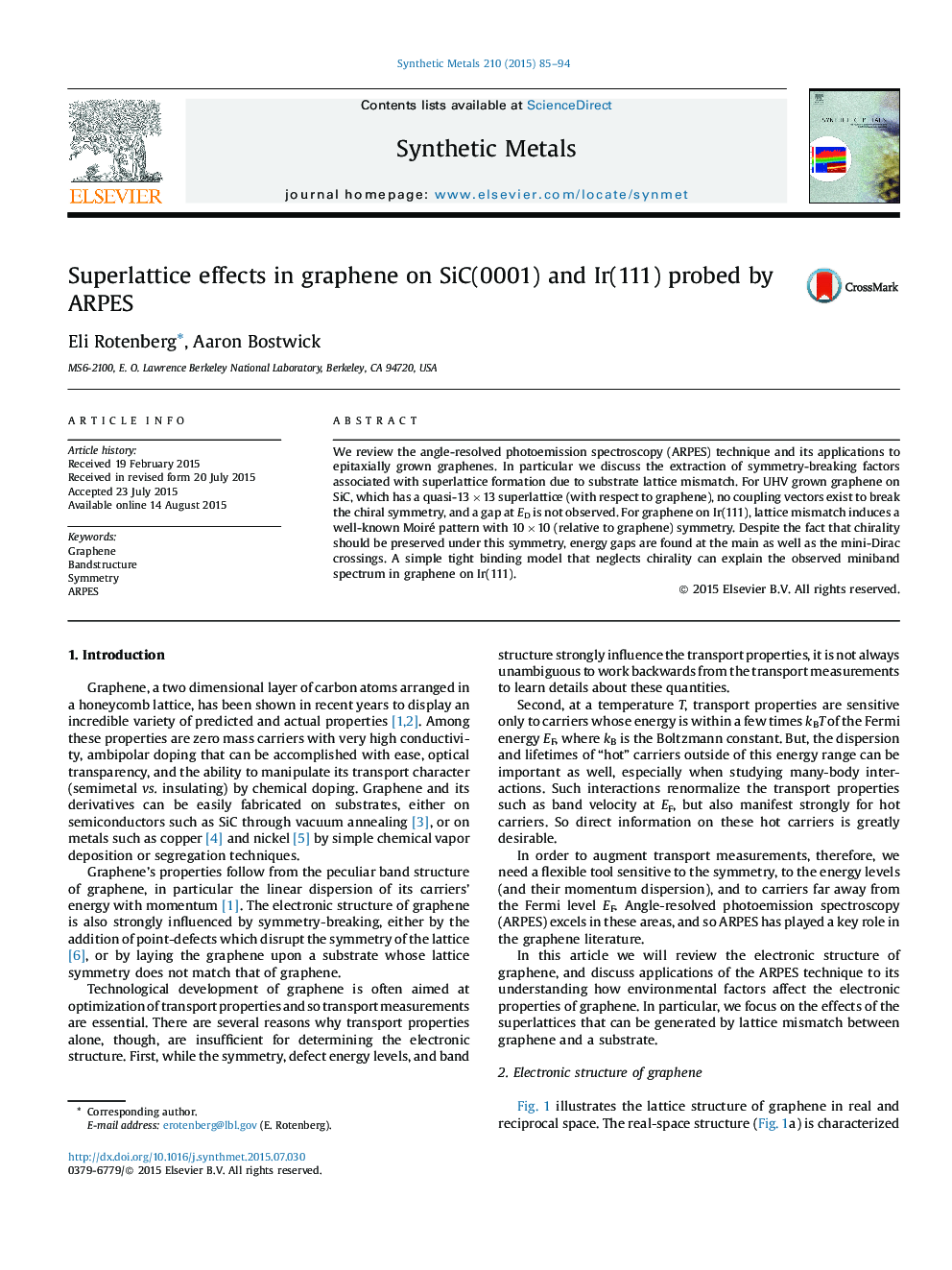| Article ID | Journal | Published Year | Pages | File Type |
|---|---|---|---|---|
| 1440382 | Synthetic Metals | 2015 | 10 Pages |
•Review of angle resolved photoemission spectroscopy of lattice-mismatched graphene.•Superlattice-derived minibands were analyzed for epitaxial graphene.•SiC(0001) substrates were found to preserve graphene chirality.•Ir(111) substrates show substantial chemical interaction and induce mini-bandgaps.•A tight-binding model reproduces the experimental results for Ir(111) substrates.
We review the angle-resolved photoemission spectroscopy (ARPES) technique and its applications to epitaxially grown graphenes. In particular we discuss the extraction of symmetry-breaking factors associated with superlattice formation due to substrate lattice mismatch. For UHV grown graphene on SiC, which has a quasi-13 × 13 superlattice (with respect to graphene), no coupling vectors exist to break the chiral symmetry, and a gap at ED is not observed. For graphene on Ir(111), lattice mismatch induces a well-known Moiré pattern with 10 × 10 (relative to graphene) symmetry. Despite the fact that chirality should be preserved under this symmetry, energy gaps are found at the main as well as the mini-Dirac crossings. A simple tight binding model that neglects chirality can explain the observed miniband spectrum in graphene on Ir(111).
Graphical abstractFigure optionsDownload full-size imageDownload as PowerPoint slide
